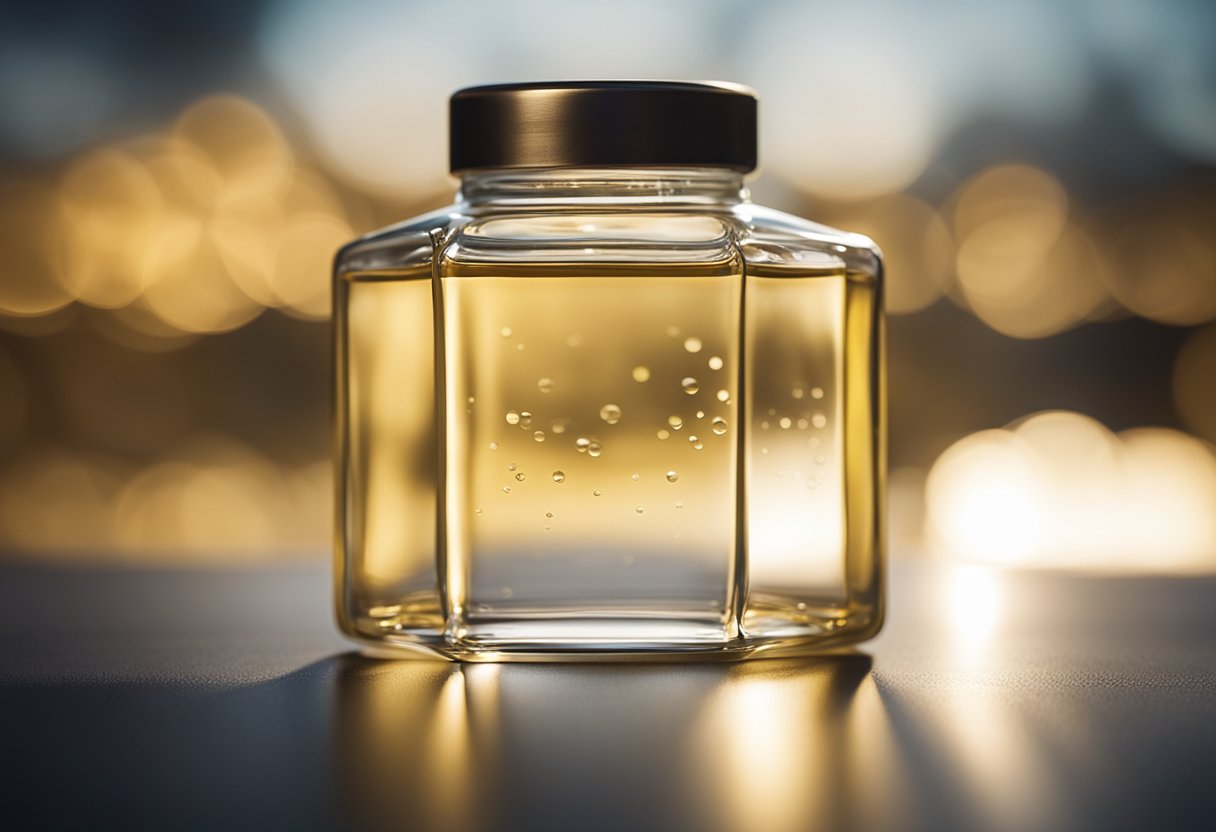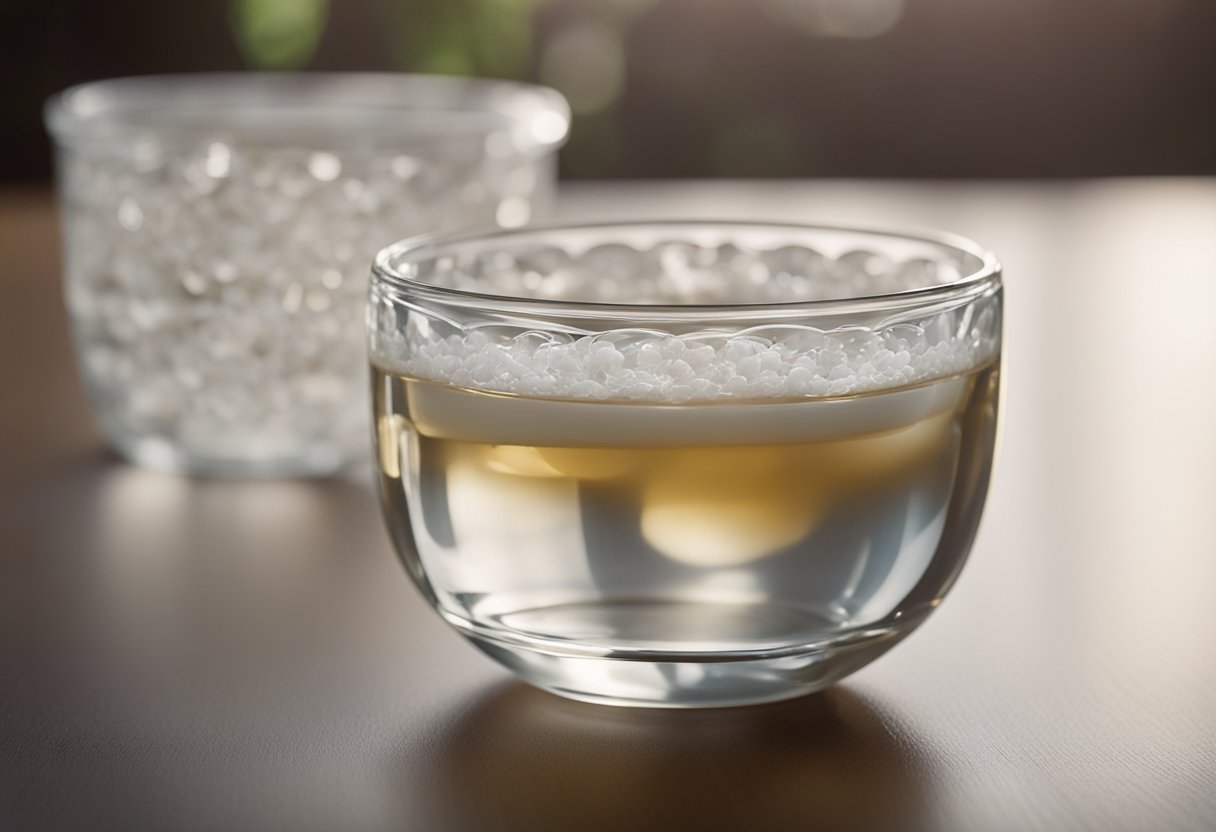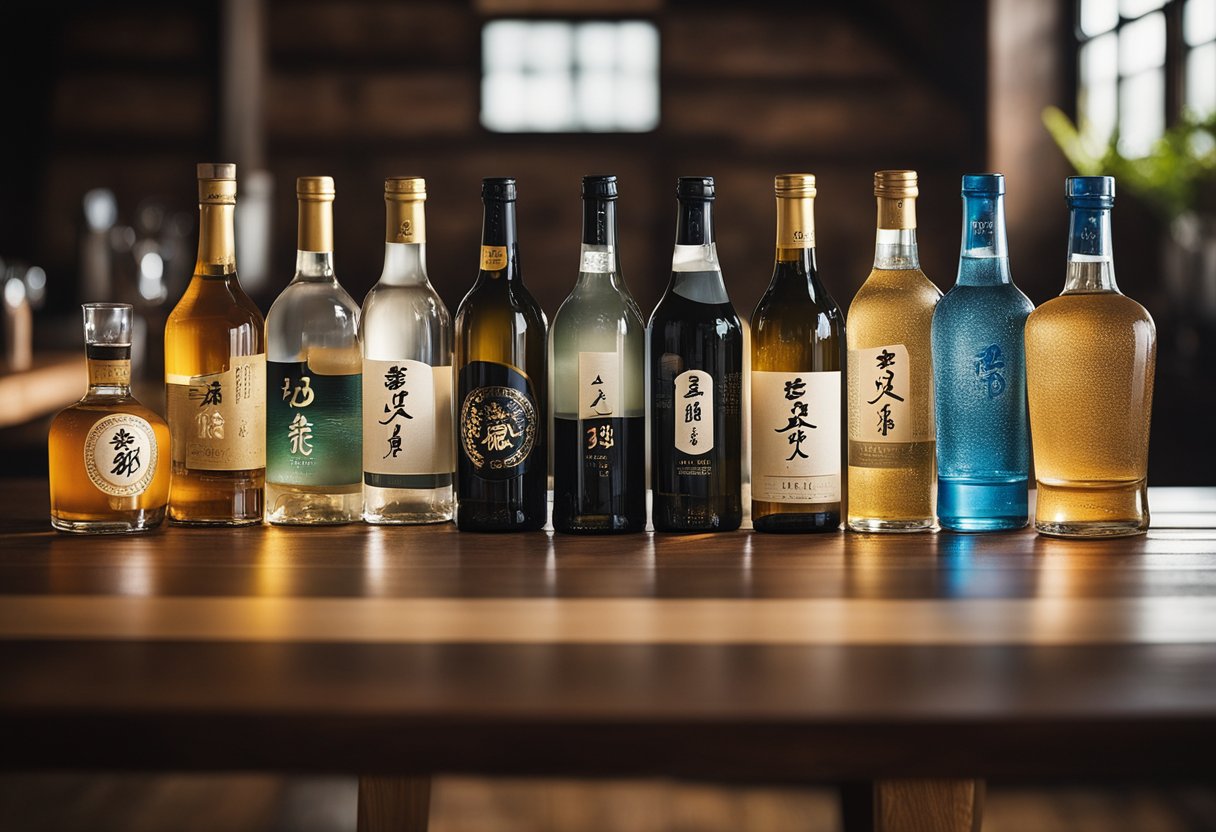I have always been intrigued by sake, the traditional Japanese alcoholic beverage that has been around for centuries.
Sake is made from fermented rice, but what does it taste like? Is it similar to wine or beer? In this article, I will explore the taste of sake and provide some insights into the brewing process, the different types of sake, and how to serve and drink it.

Sake is not a wine or a beer, but rather a unique alcoholic beverage with its own distinct flavor profile. It is a rice wine, but unlike grape wine, it is brewed more like beer.
Sake has a mild, clean taste with a slightly sweet flavor. It is less harsh on the palate than spirits and doesn’t have the strong hoppy, malty punch that beer has.
Sake is also lighter and smoother than beer and delivers less of a “punch” than other spirits and wines.
Understanding the flavor profile of sake is important, as there are many different types and grades of sake, each with its own unique taste and aroma.
The brewing process, the type of rice used, and the water source all play a role in the final flavor of the sake. In the following sections, I will delve deeper into the brewing process, the different types of sake, and how to serve and drink it.
Key Takeaways
- Sake is a rice wine that is brewed more like beer.
- Sake has a mild, clean taste with a slightly sweet flavor.
- The brewing process, type of rice used, and water source all play a role in the final flavor of sake.
What is Sake?
Sake is a traditional Japanese alcoholic beverage made from fermented rice. It is also known as nihonshu or rice wine.
Sake has been a part of Japanese culture for centuries and is often served during special occasions like weddings, festivals, and religious ceremonies.
The production of sake involves polishing the rice grains to remove the outer layer, which contains impurities that can affect the taste of the final product.
The polished rice is then washed, soaked, and steamed before being mixed with koji (a type of mold) and water to create a mash.
Yeast is added to the mash to start the fermentation process, which can take anywhere from a few days to several weeks.
The alcohol content of sake can vary depending on the type and style. Most sake falls in the range of 15% to 20% alcohol by volume, which is similar to wine. However, some premium sake can have an alcohol content of up to 23%.
Sake is often served chilled or at room temperature, but some varieties can also be enjoyed warm. The flavor of sake can range from light and fruity to rich and full-bodied, depending on the type and brewing process. The taste can also vary depending on the temperature at which it is served.
Overall, sake is a unique and complex alcoholic beverage that is deeply rooted in Japanese culture. Its delicate flavor and aroma make it a popular choice for pairing with traditional Japanese cuisine.
The Brewing Process of Sake
As a sake enthusiast, I have always been fascinated by the intricate brewing process that goes into making this beloved Japanese rice wine.
The brewing process of sake is an art form that has been perfected over centuries and involves several key steps that are carefully managed to ensure the final product has the desired flavor and aroma.
The first step in the brewing process of sake is rice preparation. The rice is carefully selected and polished to remove the outer layers, leaving behind the starchy interior.
The degree of polishing determines the quality of sake, with the highest quality sake made from rice that has been polished to at least 50 percent of its original size.
Once the rice is polished, it is washed and soaked in water to prepare it for steaming. The steamed rice is then mixed with koji, a type of mold that breaks down the starches in the rice into simple sugars.
The koji also contributes to the flavor and aroma of the final product.
Next, yeast is added to the mixture, and fermentation begins. The fermentation process can take anywhere from two to four weeks and is carefully monitored to ensure the desired flavor and aroma are achieved.
During fermentation, the yeast converts the sugars in the rice into alcohol.
After fermentation, the sake is pressed to separate the liquid from the solids. The liquid is then pasteurized to halt the fermentation process and stabilize the sake.
The final product is then aged for several months to a year, depending on the desired flavor profile.
Each step of the brewing process is crucial to the final product, and each brewery has its own unique methods and techniques.
The quality of the water used in the brewing process also plays a significant role in the flavor and aroma of the sake.
Overall, the brewing process of sake is a complex and carefully managed art form that results in a delightful and unique beverage enjoyed by many around the world.
Types of Sake
When it comes to sake, there are many different types available, each with its own unique flavor profile. In this section, I will provide an overview of some of the most common types of sake.
Junmai
Junmai is a pure sake that is made only from rice, water, yeast, and koji. This type of sake has a rich, full-bodied flavor and is often described as having a slightly acidic taste.
Junmai is a versatile sake that can be enjoyed both hot and cold, and pairs well with a variety of foods.
Ginjo
Ginjo is a more refined sake that is made using a special brewing process. This type of sake has a delicate, fruity aroma and a light, clean taste.
Ginjo is often served chilled and is a popular choice for pairing with sushi and other seafood dishes.
Daiginjo
Daiginjo is a premium sake that is made using the highest quality rice and a special brewing process. This type of sake has a complex, layered flavor and a smooth, silky texture.
Daiginjo is often served cold and is best enjoyed on its own or with light, delicate foods.
Honjozo
Honjozo is a less-refined sake that has a smooth, light-bodied flavor. This type of sake is made using a small amount of distilled alcohol, which helps to bring out the flavor and aroma of the rice.
Honjozo is often served warm and pairs well with hearty, savory dishes.
Nigori
Nigori is an unfiltered sake that has a cloudy appearance and a sweet, creamy flavor.
This type of sake is made by leaving some of the rice sediment in the final product, which gives it a unique texture and flavor. Nigori is often served chilled and pairs well with spicy and tangy foods.
Futsushu
Futsushu is an everyday sake that is made using a blend of rice, water, yeast, and koji. This type of sake has a simple, straightforward flavor and is often described as having a slightly sweet taste.
Futsushu is versatile and can be enjoyed both hot and cold, and pairs well with a variety of foods.
Genshu
Genshu is a full-strength sake that is not diluted with water. This type of sake has a bold, intense flavor and is often described as having a slightly higher alcohol content than other types of sake.
Genshu is best enjoyed on its own or with strong, flavorful foods.
Koshu
Koshu is a aged sake that has a deep, complex flavor. This type of sake is aged for several years, which gives it a rich, nutty taste and a smooth, mellow finish.
Koshu is often served at room temperature and pairs well with rich, savory dishes.
Shiboritate
Shiboritate is a fresh, unpasteurized sake that is bottled immediately after fermentation. This type of sake has a lively, fruity flavor and is often described as having a slightly effervescent quality.
Shiboritate is best enjoyed chilled and pairs well with light, refreshing foods.
In conclusion, there are many different types of sake available, each with its own unique flavor profile. Whether you prefer a bold, full-bodied sake or a light, delicate one, there is sure to be a sake that suits your taste.
Understanding Sake Flavor Profile
Sake is a unique alcoholic beverage that has a delicate and complex flavor profile. Understanding the different flavor components of sake can help you appreciate its taste and choose the right sake to suit your preferences.
Sweetness
In general, sake has a slightly sweet flavor. The sweetness comes from the natural sugars in the rice used to make sake.
The sweetness can vary depending on the type of rice and the degree of polishing. Sake with a higher polishing ratio tends to have a more refined and delicate sweetness.
Umami
Umami is a Japanese term that refers to the fifth taste sensation, after sweet, sour, salty, and bitter. It is often described as a savory, meaty, or brothy flavor.
Sake has a distinct umami flavor that comes from the amino acids produced during the brewing process. The umami flavor can be more pronounced in certain types of sake, such as Junmai and Honjozo.
Acidity
Sake has a mild acidity that helps balance out the sweetness and enhances the overall flavor profile. The acidity can vary depending on the type of sake and the brewing process. Sake with a higher acidity tends to have a more refreshing and crisp taste.
Nutty
Some types of sake have a nutty flavor that comes from the yeast used during the brewing process. The nutty flavor can be more pronounced in certain types of sake, such as Ginjo and Daiginjo.
Floral
Sake can have a floral aroma and flavor that comes from the esters produced during the brewing process. The floral notes can vary depending on the type of sake and the brewing process.
Sake with a more pronounced floral aroma tends to have a more delicate and refined taste.
Fruity
Sake can also have a fruity aroma and flavor that comes from the fermentation process. The fruity notes can vary depending on the type of sake and the yeast used during the brewing process.
Sake with a more pronounced fruity aroma tends to have a more refreshing and lively taste.
Savory
Sake can have a savory flavor that comes from the umami and amino acids produced during the brewing process.
The savory notes can vary depending on the type of sake and the brewing process. Sake with a more pronounced savory flavor tends to have a more full-bodied and rich taste.
Earthy
Some types of sake have an earthy flavor that comes from the rice used during the brewing process. The earthy notes can be more pronounced in certain types of sake, such as Junmai and Honjozo.
Overall, the flavor profile of sake is complex and nuanced. The different flavor components work together to create a unique and enjoyable drinking experience.
Sake Aromas

As a sake enthusiast, I find the aroma of sake to be just as important as its taste. The fragrance of sake can be described as floral, fruity, or even earthy.
The aroma of sake can vary depending on the type of sake, the brewing process, and the temperature at which it is served.
One of the most common aromas found in sake is a fruity aroma. This aroma is often described as having a hint of apple, pear, or even banana.
The fruity aroma is most commonly found in ginjo and daiginjo sakes, which are brewed using a special process that removes the outer layer of the rice grain.
Another aroma commonly found in sake is a fragrant aroma. This aroma is often described as being floral and can be reminiscent of jasmine or cherry blossoms.
The fragrant aroma is most commonly found in junmai and honjozo sakes, which are brewed using a different process that leaves the outer layer of the rice grain intact.
In addition to fruity and fragrant aromas, some sakes can also have an earthy aroma. This aroma is often described as being reminiscent of mushrooms or even wet earth.
The earthy aroma is most commonly found in aged sakes, which have been allowed to mature for several years.
Overall, the aroma of sake can greatly enhance the drinking experience and can be just as important as the taste. When trying different types of sake, I always make sure to take a moment to appreciate the aroma before taking a sip.
Serving and Drinking Sake
When it comes to serving and drinking sake, there are a few things to keep in mind. Sake can be served warm or cold, depending on the type of sake and personal preference.
Additionally, the type of glassware used can also affect the taste and experience of drinking sake.
Warm Sake
Warm sake, or atsukan, is a popular way to enjoy sake in colder months. It can also help bring out the flavors and aromas of certain types of sake.
To warm sake, it is traditionally heated in a tokkuri, a small ceramic or porcelain bottle, and then poured into a small cup called an ochoko.
It is important to not overheat the sake, as it can affect the flavor and aroma. Generally, warm sake should be heated to around 104-113°F (40-45°C).
It is also important to note that not all types of sake should be served warm, so it is best to check the label or ask a sake expert for recommendations.
Cold Sake
Cold sake, or reishu, is another popular way to enjoy sake. It is typically served chilled and can be enjoyed straight or mixed with other ingredients to create a refreshing cocktail.
Cold sake is often served in a wine glass or a traditional sake cup called a choko.
When serving cold sake, it is important to chill the sake to the appropriate temperature. Generally, sake should be chilled to around 50-59°F (10-15°C) for optimal flavor and aroma.
Glassware
The type of glassware used to serve sake can also affect the taste and experience of drinking sake. Traditionally, sake is served in a small cup called an ochoko or a square wooden box called a masu.
However, some people prefer to drink sake from a wine glass or other types of glassware.
When choosing glassware, it is important to consider the type of sake being served. For example, a full-bodied sake may be better enjoyed in a wider glass, while a delicate sake may be better suited for a smaller cup.
Sake Set
A sake set typically includes a tokkuri and several ochoko cups. It is a great way to serve and enjoy sake with friends and family. Sake sets come in a variety of designs and materials, including ceramic, glass, and wood.
When choosing a sake set, it is important to consider the occasion and personal preferences. Some people may prefer a traditional ceramic set, while others may prefer a modern glass set.
Pairing Sake with Food
Sake is a versatile beverage that can be paired with a variety of foods. Traditionally, sake is paired with Japanese cuisine, such as sushi and sashimi. However, it can also be paired with other types of cuisine, including Italian and French.
When pairing sake with food, it is important to consider the flavor and texture of both the sake and the food.
Some types of sake may be better suited for rich and savory dishes, while others may be better suited for light and refreshing dishes.
It is also important to consider the temperature of the sake, as well as the temperature and preparation of the food.
Notable Sake Brands

As a sake enthusiast, I have tried many different brands and varieties of sake over the years. Here are a few notable sake brands that I would highly recommend:
Dassai
Dassai is a premium sake brand that is known for its high quality and smooth taste. Their sake is made with only the finest ingredients and is carefully crafted to bring out the best flavors and aromas.
Dassai has a wide range of sake varieties, from light and refreshing to rich and complex. If you’re looking for a top-notch sake experience, Dassai is definitely worth trying.
Kokuryu
Kokuryu is another premium sake brand that is highly regarded by sake enthusiasts. Their sake is made with locally sourced rice and pure spring water, which gives it a unique and delicious flavor.
Kokuryu has a wide range of sake varieties, from light and fruity to full-bodied and rich. If you’re looking for a high-quality sake that is full of flavor, Kokuryu is definitely worth checking out.
Juyondai
Juyondai is a sake brand that is known for its bold and complex flavors. Their sake is made with a special yeast strain that gives it a unique and distinctive taste. Juyondai has a wide range of sake varieties, from light and refreshing to full-bodied and rich.
If you’re looking for a sake that is full of flavor and complexity, Juyondai is a great choice.
Otokoyama
Otokoyama is a well-known sake brand that has been around for over 340 years. Their sake is made with locally sourced rice and pure spring water, which gives it a clean and refreshing taste.
Otokoyama has a wide range of sake varieties, from light and fruity to full-bodied and rich. If you’re looking for a classic sake that is both delicious and affordable, Otokoyama is definitely worth trying.
Overall, these are just a few of the many notable sake brands that are available today. Each brand has its own unique flavor and style, so it’s worth trying a few different varieties to see which ones you like best.
Whether you’re a sake enthusiast or just starting to explore the world of sake, there is sure to be a brand out there that will suit your taste.
How to Store Sake
As a sake enthusiast, I know that proper storage is essential to maintain the quality and flavor of this delicate beverage. Sake can be affected by various factors, including light, heat, and air exposure.
Therefore, it is crucial to store sake correctly to ensure that it retains its original taste and aroma.
The best place to store sake is in a cool and dark place. Ideally, you should keep sake in a fridge that maintains a temperature range of 41 to 50 degrees Fahrenheit (5 to 10 degrees Celsius).
This temperature range helps to prevent the growth of microorganisms that can spoil the sake.
When storing unopened bottles of sake, make sure to keep them away from direct sunlight and heat sources. Sake should be kept in its original box or wrapped in a cloth to protect it from light exposure.
If you have already opened a bottle, you should consume it within a few days to prevent oxidation.
Sake can also absorb odors from other foods, so it is crucial to store it away from strong-smelling items. Avoid storing sake near onions, garlic, or any other strong-smelling foods.
It is also important to note that sake has no expiry date, and it does not go off or turn stale. Instead, the flavor may change over time, moving away from the way the manufacturer intended it to taste.
Therefore, it is essential to store sake correctly to maintain its original flavor and aroma.
In summary, storing sake in a cool and dark place, away from direct sunlight and heat sources, is crucial to maintaining its original taste and aroma. Keep sake away from strong-smelling foods and consume it within a few days after opening.
By following these simple tips, you can enjoy a delicious and high-quality sake experience.
Frequently Asked Questions

What are the common flavors of sake?
Sake has a subtle flavor profile that can range from sweet to dry. Some common flavors include rice, honeydew melon, green apple, and pear. Additionally, sake can have a floral or nutty aroma.
How does the alcohol content of sake compare to other drinks?
Sake typically has an alcohol content of 15% to 16%, which is slightly higher than wine. However, it is lower than other spirits such as whiskey or vodka.
Is sake more bitter or sweet?
Sake is generally considered to be more sweet than bitter. However, the sweetness can vary depending on the type of sake and the brewing process.
What is the proper way to drink sake?
Traditionally, sake is served in small ceramic cups called “ochoko”. It is best enjoyed at room temperature or slightly chilled. It is also common to pour sake for others, rather than pouring for oneself.
What are some common characteristics of high-quality sake?
High-quality sake is typically made with high-quality rice and water. It should have a clean and smooth flavor profile with a balanced acidity and sweetness. Additionally, the aroma should be pleasant and not overpowering.
What are some signs of bad or spoiled sake?
Spoiled sake can have a sour or vinegar-like taste and a cloudy appearance. It may also have a strong, unpleasant odor. It is important to store sake in a cool, dark place and consume it within a few months of opening to ensure freshness.







